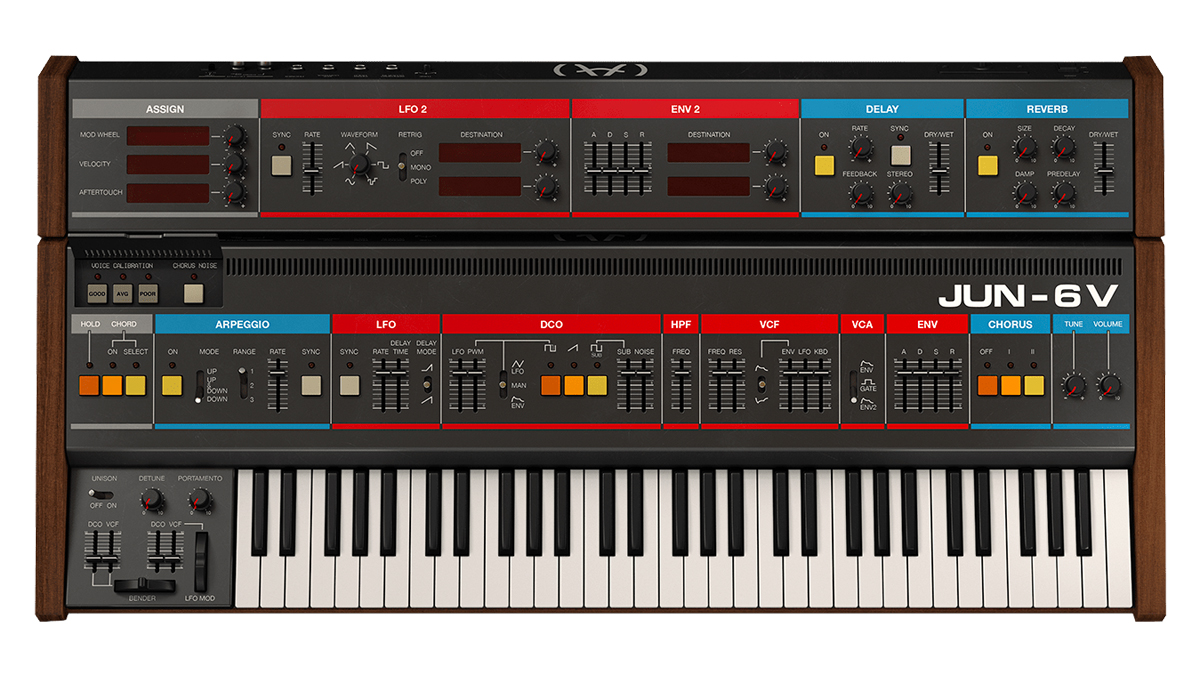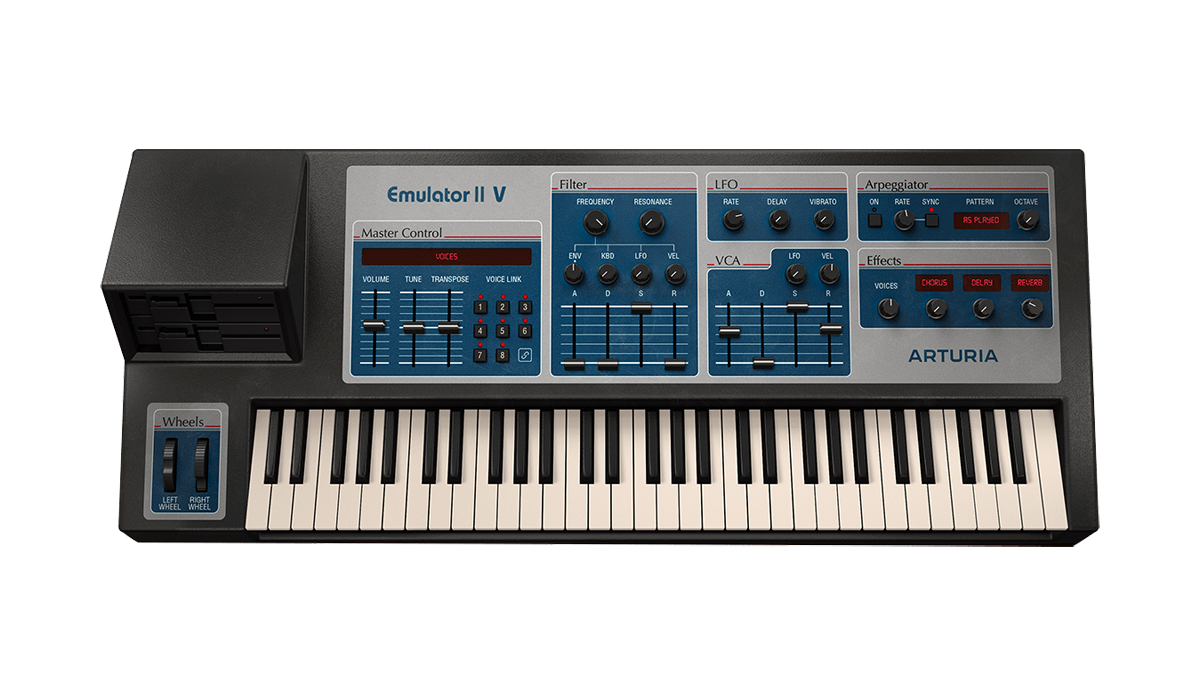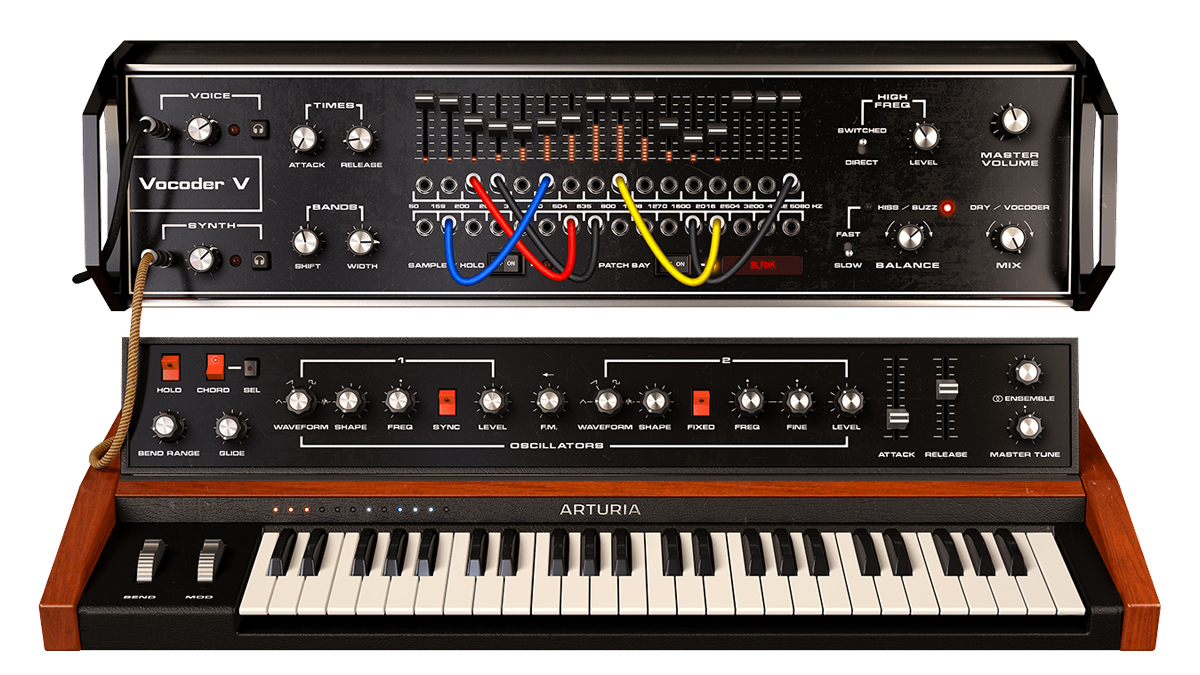Arturia launches the V Collection 8 vintage synth collection, with new Juno, Emulator II and Vocoder emulations joining the party
The OB-Xa V is here too, and there are updates for the Jup-8 V and Stage-73 V
Arturia has unveiled V Collection 8, its latest bundle of classic software synths and keyboards. This adds three brand-new instruments - Jun 6 V, Emulator II V and Vocoder V - as well as the recently-released OB-Xa V. There are updates for Jup-8 V, Stage-73 V and Analog Lab V, too.
The Jun-6 V is, predictably enough, a software reboot of a classic Roland Juno synth. This emulation comes complete with the much-loved chorus effect and enhanced modulation options. The Emulator II V, meanwhile, recalls E-MU’s classic ‘80s sampler/synth, and promises all the digital grit of the original.
There’s also the 16-channel Vocoder V. This is billed as “the ultimate voice electrifier”, and boasts its own sampler and synth engine.



Elsewhere, the Jupiter-8-inspired Jup-8 V has now reached version 4, which brings with it a new sound and modulation engine. The Stage-73 V2, meanwhile, equips this Rhodes emulation with a redesigned physical modelling engine that promises greater levels of authenticity and variety.
Finally, Analog Lab V, which brings together the best of the V Collection presets in one place, now has a new GUI and browser, which are designed to make it more intuitive than before. There are also 700 new presets that come with four pre-mapped macros for easy editing, plus playlists so that you can better organise your presets.
V Collection 8 is available now for PC and Mac for the introductory price of €499 (regular price will be €599). There are also discounts for existing users - log in to your Arturia discount to discover your price.
Find out more, and see all the instruments that are included in V Collection 8, on the Arturia website.
Get the MusicRadar Newsletter
Want all the hottest music and gear news, reviews, deals, features and more, direct to your inbox? Sign up here.



I’m the Deputy Editor of MusicRadar, having worked on the site since its launch in 2007. I previously spent eight years working on our sister magazine, Computer Music. I’ve been playing the piano, gigging in bands and failing to finish tracks at home for more than 30 years, 24 of which I’ve also spent writing about music and the ever-changing technology used to make it.
“Excels at unique modulated timbres, atonal drones and microtonal sequences that reinvent themselves each time you dare to touch the synth”: Soma Laboratories Lyra-4 review
“A superb-sounding and well thought-out pro-end keyboard”: Roland V-Stage 88 & 76-note keyboards review









